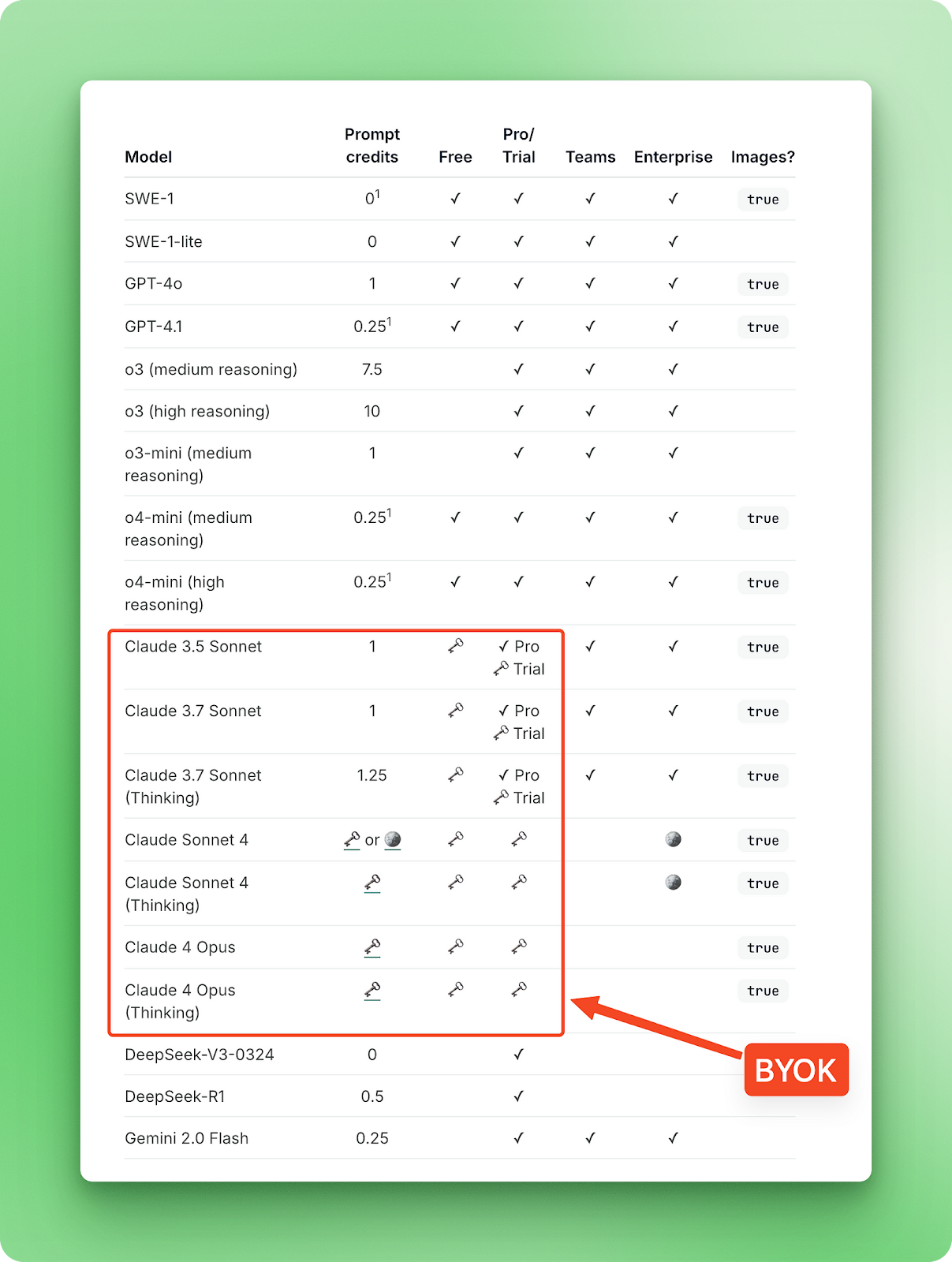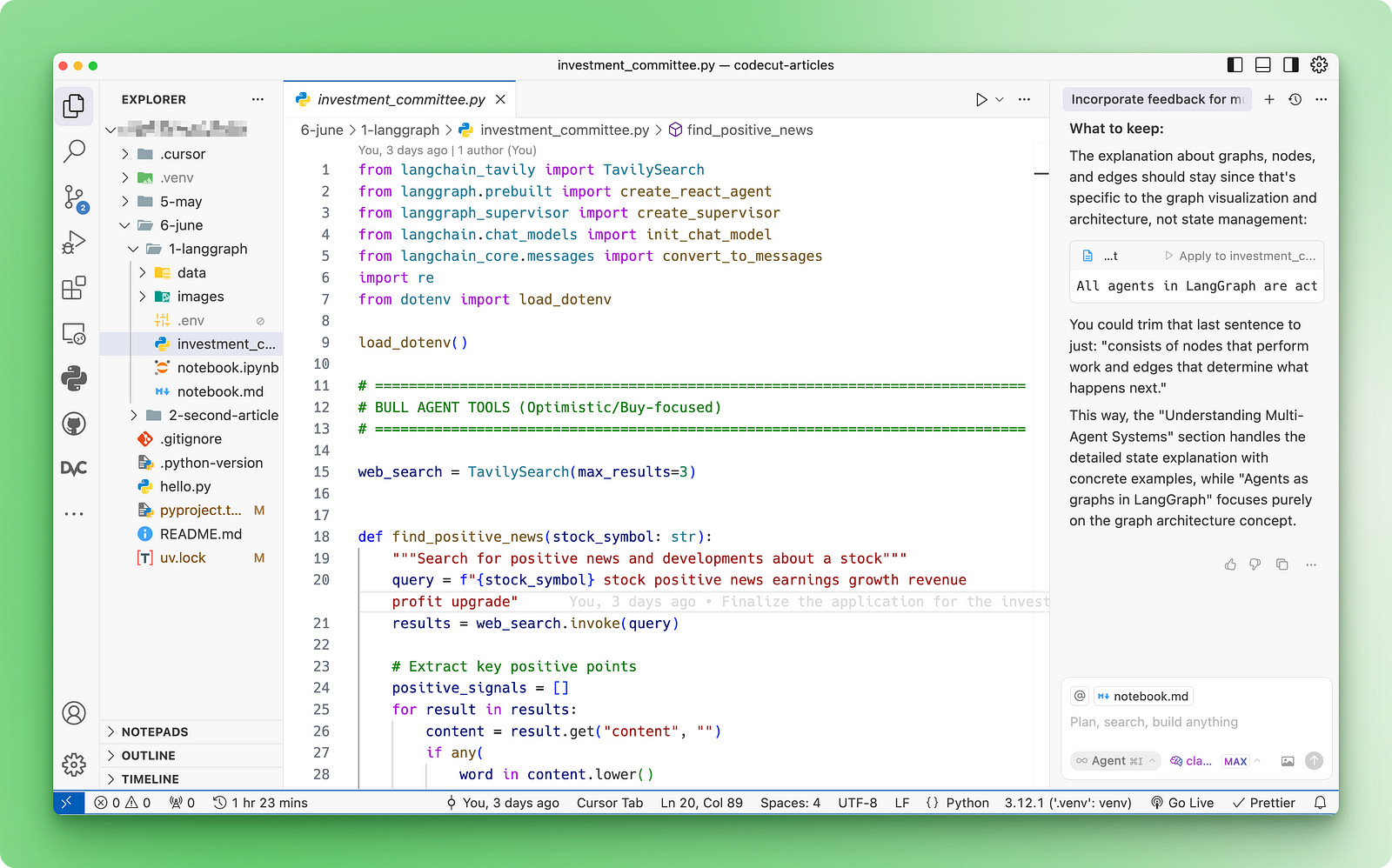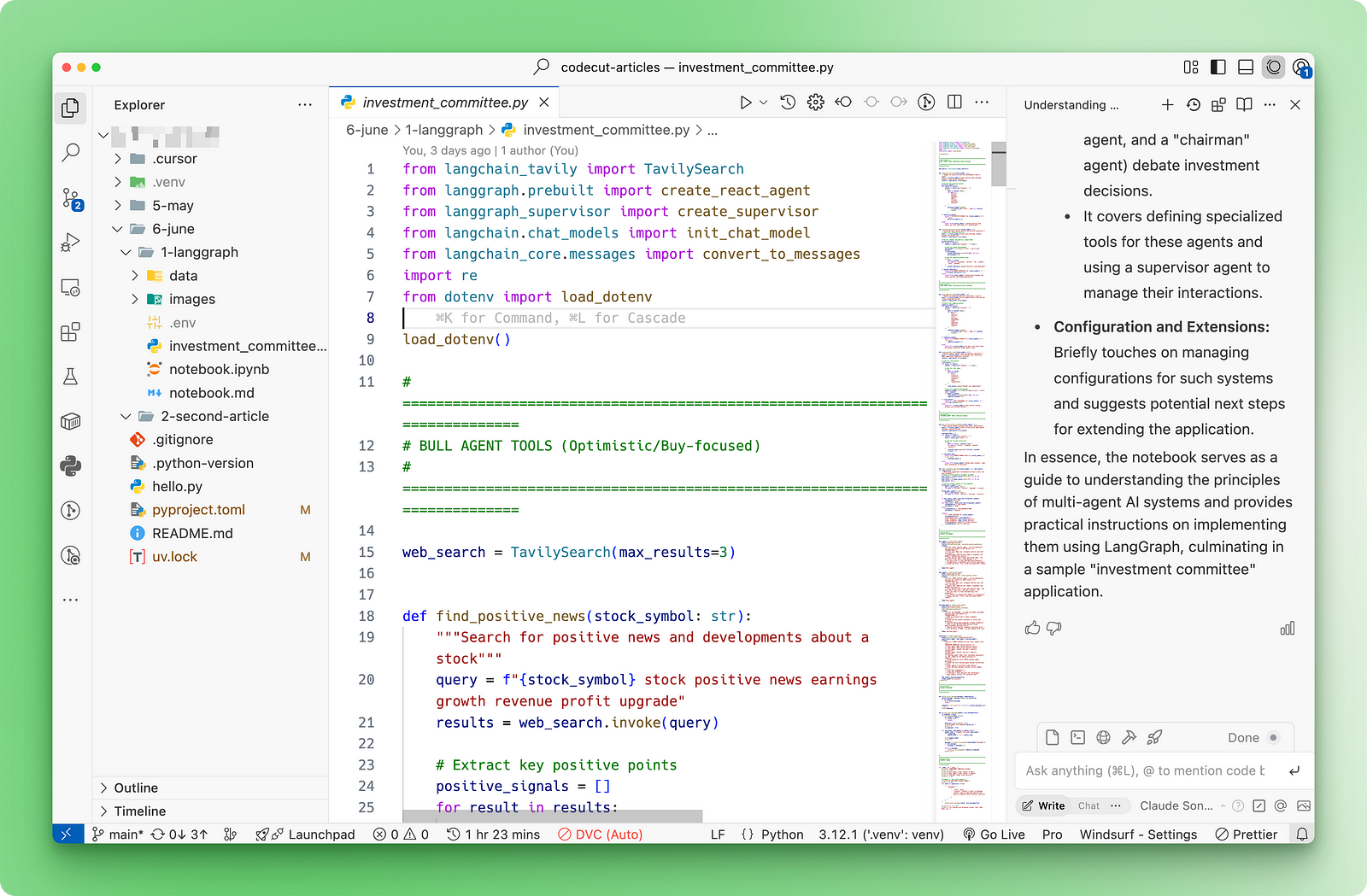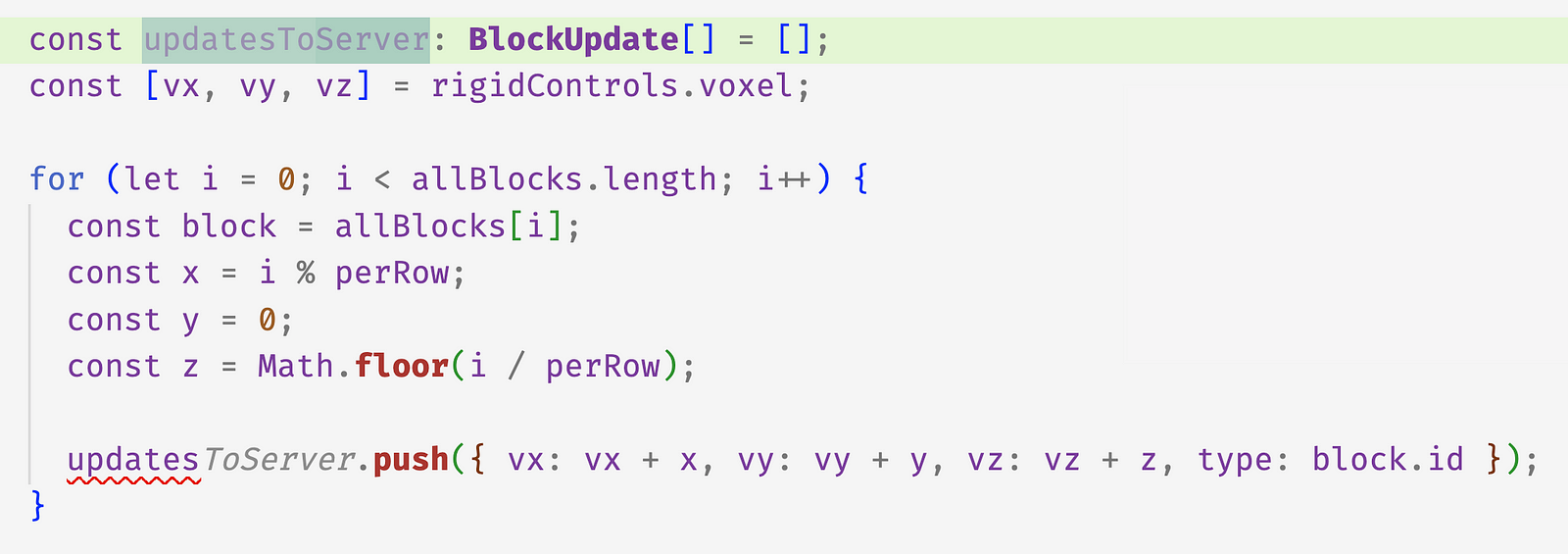Track
AI-powered coding assistants have become my largest business expense, reaching nearly $100 monthly across multiple subscriptions. I pay these fees willingly because the return on investment through time savings and productivity gains far exceeds the cost.
I’m not alone in this shift. The rapid adoption of platforms like Cursor and Windsurf shows how developers are embracing AI assistance. These tools promise to reduce coding time, catch bugs earlier, and handle routine tasks that used to eat up hours of our day. But with multiple options available, choosing the right one means understanding what makes each platform different.
Both Cursor and Windsurf offer compelling approaches to AI-assisted development, but they serve different needs and workflows. This comparison examines their AI agent capabilities, context management systems, deployment features, and pricing models. By the end, you’ll have a clear picture of which tool fits your development style, budget, and project needs.
We keep our readers updated on the latest in AI by sending out The Median, our free Friday newsletter that breaks down the week’s key stories. Subscribe and stay sharp in just a few minutes a week:
Windsurf vs Cursor: Quick Comparison Table
For time-pressed readers who need a decision in under two minutes, here’s the essential breakdown:
|
Feature |
Cursor |
Windsurf |
|
Starting Price |
Free (200 completions) → $20/month Pro |
Free (25 credits) → $15/month Pro |
|
AI Agent |
Agent mode with advanced tooling |
Cascade with deployment focus |
|
Best For |
Experienced developers, large codebases |
Beginners, vibe-coders, personal projects |
|
Key Differentiator |
Access to Claude 4 and Max Mode for complex projects |
One-click app deployment for instant sharing |
Quick verdict
Choose Cursor if:
- You need access to frontier models like Claude 4
- You work on large, complex codebases requiring advanced context
- You prefer granular control over AI interactions and context management
Choose Windsurf if:
- You want to deploy web applications quickly without configuration hassles
- You’re budget-conscious or building smaller personal projects
- You prefer automated context management over manual curation
The bottom line
Neither tool dominates across all use cases. Cursor excels at sophisticated development workflows with premium model access, while Windsurf removes deployment friction and costs less monthly. Your choice depends on whether you prioritize advanced AI capabilities or streamlined project sharing.
Both platforms will likely converge on features over time, but their current strengths serve different developer needs. The $5 monthly price difference matters less than whether you need Claude 4 access or one-click deployment capabilities.
Now that we’ve covered the comparison in a nutshell, let’s explore it in more detail for the following features:
- AI agent capabilities
- Context understanding and codebase intelligence
- User experience and learning curve
- Code completion and writing assistance
- Pricing and value proposition
AI Agent Capabilities: Cursor’s Agent Mode vs Windsurf’s Cascade
Agentic code execution means having an AI agent that can autonomously perform multiple coding tasks in sequence , like reading files, writing code, running commands, and making decisions about next steps. Rather than just answering questions or generating single code snippets, these agents can complete entire workflows from start to finish.
Both Cursor and Windsurf offer this capability, but with different approaches and trade-offs. Cursor’s Agent Mode and Windsurf’s Cascade actually work quite similarly in their basic flow: you give a prompt, watch the agent make edits live in your codebase, and then choose to accept or reject the changes through diff previews. Both tools show you exactly what code is being modified before applying changes.
The main difference lies in their toolkit capabilities:
- Cursor offers broader tool access: Grep searches, fuzzy file matching, and advanced codebase operations.
- Windsurf provides standard tools: File editing, web search, and terminal commands.
- Both support web search: However, Cursor’s implementation feels more integrated into the coding workflow.
Terminal command execution is a shared weakness that can disrupt your coding flow. Both tools sometimes get stuck waiting to determine if a command has finished executing. This matters because it breaks the autonomous experience — you’re suddenly back to manually managing the AI instead of letting it work independently.
With Cursor, you can click “skip the terminal command” once you know the task is complete. Windsurf handles this less gracefully. When Cascade gets stuck on a terminal operation, I often have to interrupt the flow by typing “continue” to get it moving again.
Model access shows how each platform approaches AI capabilities differently. Cursor provides access to all frontier models through a credits system, and when you run out of credits, you can continue using them at API pricing plus a 20% markup.
Windsurf takes a different approach — they are currently promoting Gemini 2.5 heavily as the default for new users, but accessing frontier models like Claude 3.5 or 4.x requires BYOK (bring your own API key) due to straining relationships with Anthropic.

However, one thing I particularly appreciate about Windsurf’s Cascade is its live context understanding. If I’m manually editing code in an open file and then stop to ask Cascade to “continue,” it immediately understands where I left off and picks up the work from that exact point. This creates a more fluid collaborative experience where the AI feels like it’s truly working alongside you rather than operating in discrete, separate tasks.
My personal take:
If you’re already a software engineer with experience, I would lean towards Cursor for its access to the Claude model family and advanced tooling. You will especially notice the quality difference when using Claude 4 models in larger, production-grade scenarios.
If you’re a vibe-coder building smaller personal projects, Windsurf is still a solid, cheaper option (see the pricing section for details). However, agent capabilities are just one piece of the puzzle — there are many other factors that will influence your choice, so let’s continue exploring.
Context Understanding & Codebase Intelligence
Context in AI-powered IDEs refers to all the information the AI can see and process when generating code — your current files, project structure, chat history, and previous edits. Think of it as the AI’s “working memory” that helps it understand your project and provide relevant suggestions. The context size is measured in tokens (roughly 750 words per 1,000 tokens).
Cursor takes a developer-driven approach to context management. You manually curate what the AI sees using @ symbols to reference specific files, folders, or code snippets. Cursor also automatically pulls in your current file and semantically similar patterns from your codebase, but you maintain granular control over what gets included.
Windsurf uses an AI-driven context system that automatically indexes your entire codebase through retrieval-augmented generation (RAG). Windsurf’s context engine builds a deep understanding of your project structure, past actions, and next intent without requiring manual file selection. Cascade stays aware of your real-time actions, reducing the need to manually specify context.
The practical implications become clear when working on different project sizes:
- Cursor’s
@Codebasefeature searches your entire project but requires you to specify what to include. - Windsurf’s automatic indexing handles project-wide context but may occasionally include irrelevant files.
- Manual vs. automatic trade-offs: Cursor offers precision through manual curation, while Windsurf provides convenience through automation.
Both tools remain frustratingly opaque about their actual context limits. The theoretical context size depends entirely on the underlying model — Claude 4 supports up to 200,000 tokens, while Gemini models can handle up to 1 million tokens. However, neither IDE gives you access to the full model context even when using these large-context models.
According to various sources, Cursor’s practical context ranges between 10,000–50,000 tokens due to manual file selection limitations. Windsurf offers around 200,000 tokens through its RAG-based approach that automatically selects relevant code snippets. This gives Windsurf a notable advantage for understanding larger codebases without manual curation.
Context becomes a real bottleneck for serious development work because it includes everything: current chat history, input/output tokens, and the full changelog of files edited during your session. No AI-powered IDE can support 30 minutes of intensive coding in a single chat thread. When you hit the context limit mid-debugging or during complex feature implementation, you must start fresh and lose conversational continuity.
Cursor attempts to solve this with conversation history summaries, but summarizing 100,000+ tokens into a few paragraphs doesn’t preserve enough detail to continue meaningfully. Windsurf offers “Memories” that automatically save project facts to persistent workspace storage, which helps for smaller projects but doesn’t solve large-scale limitations.
For complex projects requiring maximum context, Cursor offers Max Mode with up to 1 million tokens for compatible models. The catch is API pricing plus a 20% markup outside your subscription. This makes it expensive for extended use but valuable for complex debugging sessions or large refactoring tasks. For example, I regularly pay surplus for Cursor because I use MAX MODE for writing tasks a lot.
Note: both IDEs support project or system-wide “Rules” and adding documents or web pages to build a knowledge base. However, context size limitations affect these features as well, lessening their impact.
User Experience & Learning Curve
If you’re a VS Code veteran, you’ll face minimal adjustment with either tool. Both IDEs build on the familiar VS Code foundation, making your transition nearly seamless.
The onboarding process mirrors itself across both platforms. When you install either for the first time, you’ll see three straightforward options:
- Import settings from VS Code
- Import settings from the competing IDE (both tools acknowledge their rivalry)
- Start fresh
Settings import works smoothly in both, though I encountered keybinding issues when migrating from Cursor to Windsurf initially. Beyond setup, you’ll need to master these core concepts:
- Opening Agent mode/Cascade for task automation
- Performing inline code edits
- Accepting/rejecting suggestions and reviewing diffs
- Managing context and file selection
- Configuring rules and memories
- Selecting appropriate models
Expect to spend 30 minutes reading documentation plus 30 minutes of hands-on practice to become proficient.
If you’re new to VS Code, I estimate you’ll face roughly two additional hours of configuration and environment setup. Python developers can reference our VSCode setup tutorial for Python for guidance.
Cursor delivers a cleaner interface by tucking advanced configurations into dedicated settings pages:

Windsurf exposes more options directly in the main interface:

If you’re a development beginner with basic VS Code knowledge, I’d recommend Cursor for its smoother onboarding and less overwhelming interface. As an experienced developer, you’ll find UI differences negligible.
If you’re a pure vibe-coder seeking fully autonomous app creation without code interaction, neither IDE fits your needs perfectly. You might be better served by dedicated coding agents like Claude Code rather than these VS Code-based solutions.
Code Completion & Writing Assistance
Both Cursor and Windsurf offer autocomplete systems that predict multiple lines of code rather than just suggesting function names. These AI-powered Tab features can predict your next several lines, fix errors in real-time, and navigate you to logical next locations.
Cursor’s Tab feature uses a custom model trained for code completion. Cursor Tab suggests entire diffs instead of simple insertions — it modifies existing code around your cursor and handles multi-line edits. The system considers your recent changes and linter errors for contextually relevant suggestions.

Windsurf’s Tab feature runs on SWE-1-mini, their in-house model designed for speed. Windsurf Tab uses broader context including terminal history, Cascade chat interactions, recent editor actions, and clipboard content (with opt-in permission). This creates suggestions that understand your overall workflow.
Both systems support “tab-tab-tab editing,” accepting multiple suggestions in sequence to rapidly build code. Cursor calls this Cursor Prediction and anticipates your next cursor location after an edit is accepted. Windsurf offers similar functionality through “Tab to Jump,” which predicts logical navigation points.
The real difference appears in inline editing capabilities. Both platforms provide Ctrl+K/Cmd+K functionality, but Cursor offers more comprehensive options.
Cursor’s inline edit system provides multiple modes through its Cmd+K interface:
- Inline generation when no code is selected
- Inline edits for selected code snippets
- Full file edits using Cmd+Shift+Enter
- Quick questions with Option/Alt+Enter
Cursor’s terminal Cmd+K generates terminal commands through the same prompt interface. You describe what you want to accomplish, and Cursor generates the appropriate command. This keeps you in the same workflow between code editing and terminal operations.
Windsurf’s Command feature handles inline edits but lacks terminal command generation. You’ll need to switch to Cascade chat for terminal commands instead of staying in your current workflow.
Both IDEs include auto-import functionality. Cursor handles this through their Tab system, while Windsurf provides “Tab to Import” that adds imports while keeping your cursor position.
Code quality depends heavily on your prompt engineering skills with both systems. However, both IDEs tend toward overengineering — when you ask for a simple bug fix, they sometimes create entire new features or files beyond your request.
A prompt I use to prevent this:
“Solve this [problem, bug, feature] by writing as few lines of code as possible while following my codebase architecture document”
Cursor provides more comprehensive tooling with terminal command generation and broader context awareness. Windsurf offers faster suggestions through their specialized model but with more limited scope outside the editor.
Integration & Ecosystem
Both IDEs offer nearly identical integration capabilities that extend their core functionality. You’ll find similar features for documentation access, web search, and context management across both platforms.
Shared integration features include:
- Model Context Protocol (MCP) support: Both platforms can connect to MCP servers for custom tools and services.
- Web search capabilities: Search the internet and read documentation pages automatically or on demand.
- Documentation access: Reference external docs and APIs through
@docssymbols. - Image understanding: Upload screenshots, wireframes, or design files for visual context.
- URL context: Paste links directly into chat to add web pages as context.
The core difference lies in deployment and preview capabilities.
Windsurf’s deployment advantage changes the game for beginners and vibe-coders. App Deploys lets you deploy web applications directly from Cascade with simple prompts like “Deploy this project to Netlify.” The system automatically:
- Analyzes your project framework
- Handles the deployment process
- Provides a public URL at
<subdomain>.windsurf.build - Creates a claim link for transferring to your personal account

This matters because app deployment is traditionally one of the most frustrating bottlenecks for new developers. Instead of wrestling with build configurations, hosting platforms, and deployment pipelines, you can see your work live on the internet within minutes.
Windsurf also offers Previews that let you view your app locally within the IDE or browser. You can select specific elements or errors from the preview and send them directly back to Cascade as context. This creates a tight feedback loop between development and debugging.
Cursor’s integration strength lies in its comprehensive context system and new automated debugging features. The @ symbol system provides granular control over what context gets included, while BugBot automatically detects and suggests fixes for runtime errors in your codebase.
Web search implementation works similarly in both IDEs. Windsurf uses @web for general searches and @docs for documentation-specific queries. Cursor provides @Web functionality through its context system. Both platforms can automatically detect when your question requires internet access and search without explicit prompts.
For experienced developers, the integration differences are minor — both platforms connect to the same external services and APIs. For newcomers or those building personal projects, Windsurf’s one-click deployment capability removes a major barrier to sharing and showcasing work.
Pricing & Value Proposition
Budget considerations matter when choosing an AI-powered IDE, especially as usage scales across teams. Both platforms offer free tiers with different approaches to paid upgrades. These prices were correct at the publication date of this article:
|
Plan |
Cursor |
Windsurf |
|
Free |
$0 - 200 completions, 50 requests/month, 2-week Pro trial |
$0 - 25 prompt credits/month, unlimited Tab, 1 app deploy/day |
|
Pro |
$20/month - Unlimited completions, 500 requests, Max Mode |
$15/month - 500 credits, all premium models, 5 app deploys/day |
|
Teams/Business |
$40/user/month - Privacy controls, SSO, centralized billing |
$30/user/month - Pooled credits, admin dashboard, priority support |
|
Enterprise |
Custom pricing - Advanced security, custom contracts |
$60/user/month - 1,000 credits/user, RBAC, SSO, enhanced context |
Free tier comparison shows distinct philosophies. Cursor focuses on generous completion limits with a substantial Pro trial. Windsurf offers practical deployment capabilities that matter more for beginners building real projects.
Usage limits and pricing models reveal different cost management approaches. Cursor uses request-based pricing, where you can continue with slow requests or pay API rates plus a 20% markup when limits are exceeded. Windsurf employs credits that charge only for your initial prompt, regardless of how many actions Cascade performs.
Model access creates the biggest differentiation. Cursor provides access to all frontier models including Claude 4 through a credits system, with Max Mode offering up to 1 million tokens for complex projects. Windsurf promotes Gemini 2.5 as default but requires BYOK (bring your own API key) for Claude models due to strained relationships with Anthropic.
Value for money analysis
Choose Cursor if you need access to Claude 4, work on large codebases requiring Max Mode, or prefer paying only when exceeding limits rather than upfront credit purchases.
Choose Windsurf if you’re budget-conscious, need deployment capabilities, work on smaller projects, or prefer predictable monthly costs with the credit system.
For individual developers, Windsurf delivers better value at $15/month versus Cursor’s $20/month. The deployment feature alone saves configuration time worth more than the $5 difference.
For professional teams, model access requirements determine value. Cursor’s Claude 4 access and advanced context justify higher costs for complex projects. Windsurf works well for rapid prototyping and deployment-focused workflows.
Both platforms become expensive when consistently exceeding base limits, making usage patterns the determining factor in long-term value.
My Recommendation
Before choosing, ask yourself these questions:
- What’s your primary development focus? Complex, production-grade applications favor Cursor’s advanced tooling, while rapid prototyping and personal projects align better with Windsurf’s streamlined approach.
- How important is model access? If you need Claude 4 for challenging coding tasks, Cursor provides direct access while Windsurf requires bringing your own API key.
- What’s your deployment reality? Beginners and vibe-coders benefit enormously from Windsurf’s one-click deployment, while experienced developers often have existing deployment workflows.
- What’s your budget tolerance? The $5 monthly difference between Pro plans matters less than whether you’ll consistently hit usage limits and need add-on credits.
My personal recommendation leans toward Cursor, mainly because I work on larger, complex projects where its advanced context management and Claude 4 access prove valuable. Having used Cursor longer (since it launched earlier), I’ve developed workflows around its @ symbol system and Max Mode capabilities. That said, Cursor handles smaller projects equally well, making it versatile across project sizes.
However, this preference reflects my specific use case. If you’re building personal projects, learning to code, or prioritizing quick deployment over advanced AI capabilities, Windsurf might serve you better.
Looking ahead, both platforms will likely converge on features. Windsurf will probably add more sophisticated context management, while Cursor may introduce simpler deployment options. The competitive landscape benefits users as both tools rapidly iterate and improve.
Try both platforms before committing. Use Cursor’s two-week Pro trial to test its Agent mode on a complex refactoring task. Test Windsurf’s deployment capabilities by building a small web app and getting it live within minutes. The platform that feels more natural for your workflow is probably the right choice — regardless of feature comparisons or pricing differences.
Conclusion
There’s no clear winner between Cursor and Windsurf . Your choice depends entirely on your development needs, project scale, and workflow preferences. Both platforms excel in different areas, making the decision more about fit than superiority.
Try both platforms—you can start with these two tutorials:

I am a data science content creator with over 2 years of experience and one of the largest followings on Medium. I like to write detailed articles on AI and ML with a bit of a sarcastıc style because you've got to do something to make them a bit less dull. I have produced over 130 articles and a DataCamp course to boot, with another one in the makıng. My content has been seen by over 5 million pairs of eyes, 20k of whom became followers on both Medium and LinkedIn.

